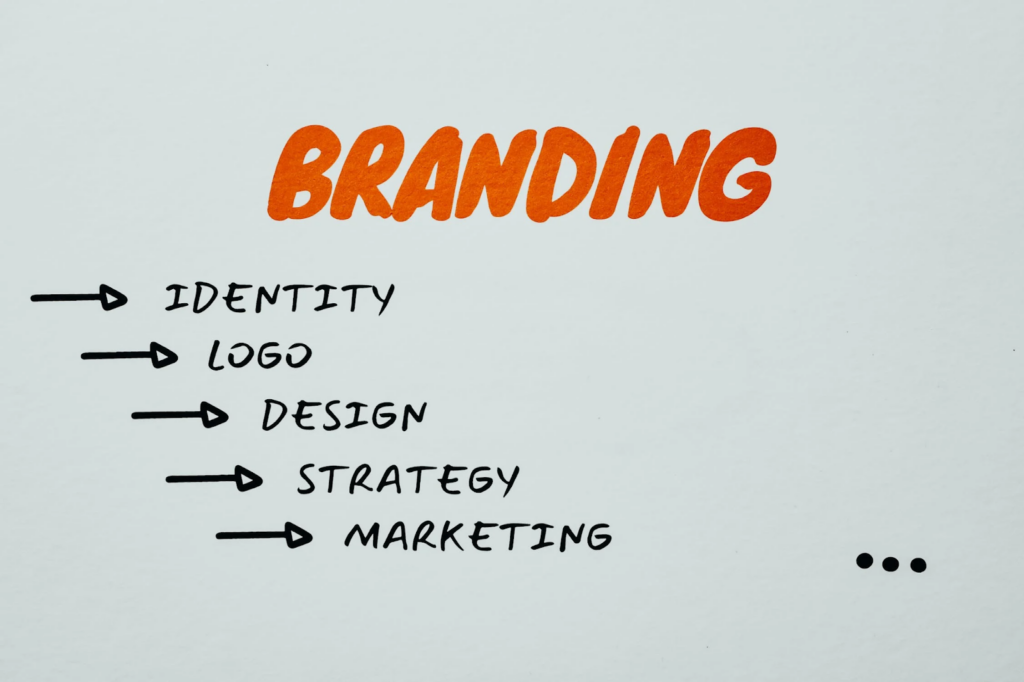#How to Develop a Winning B2B Brand Strategy In Simple Steps

Table of Contents
If you own a B2B business and are working under the impression that brand identity is essential only for B2C companies, you are in for a surprise.
With more saturation in the digital marketplace, 77% of B2B leaders believe that branding is vital for their company’s growth. To break through the noise, you must develop a brand identity that humanizes your business, engages your target audience, fosters customer loyalty, and ultimately scales your organization.
The secret ingredient to that is a powerful B2B brand strategy.
Dissecting the term: Brand Strategy
A brand strategy is a holistic approach that defines who you are, who you serve, what you do, and what you value. It encompasses different brand elements such as brand identity, voice, narrative, vision, mission statements, and business goals and objectives.
Every B2B business that strives to build a successful company needs to prioritize strong B2B brand-building strategies.
After setting key goals, business owners can take steps toward their achievement and track their progress. A B2B brand awareness strategy further ensures every team in the company is working in the right direction and supports consistent branding. It is important to note that a consistent brand image is essential to establish credibility, build trust, and boost brand awareness.
Step-by-Step Guide to Developing a B2B Brand Strategy
Let’s see what it takes to build a brand:
Spell Out Your Goals and Purpose
Every brand has a set of basic principles and beliefs it carries through its existence in the market to deliver a cohesive and consistent experience. It ensures further that your brand is easily and swiftly recognizable across all marketing channels.
Taking this into account, you can’t establish a B2B brand awareness strategy without clarifying what your brand is aiming to achieve and why your brand exists. Your goals can be qualitative such as establishing a reputation as a prominent advertising agency, or quantitative, like driving $5Million in revenue.
Your purpose, on the other side, is your distinct reason for being. What kind of impact does your brand wish to create in the world?
In today’s time, according to a study by Ipsos, consumers of B2B or B2C industries are looking for a brand that is driven by purpose and more precisely, is aligned with their values.
Define the Persona of the Ideal Audience
Defining the ideal audience persona is one of the essential steps in B2B brand-building strategies. This makes it easier for you to tailor brand content, messaging, and even product development, as well as marketing campaigns, to meet the specific behaviors, concerns, and needs of the members of your target audience.
In B2B, the ideal persona will be the stakeholder who is authorized to make purchase decisions in the organization or institution you wish to do business with.
Since there is always more than one stakeholder involved in the buying committee of B2B businesses, including the CEO, financial advisor, and director, your focus must be understanding each profile. It is important to uncover detailed and relevant information about each decision-maker, including their role in the buying committee, needs, wants, and concerns.
Build a Brand Personality your Audience will Connect With
Great brands, whether B2C or B2B, have a distinct personality that injects humanity into your business and fosters deeper customer relationships.
Simply put, your brand personality is the human characteristics associated with your business.
A great starting point to establish a strong personality is to ask yourself how your brand would be defined as a person. Will they be serious and sincere, or are they adventurous and bold?
As such, consider the audience persona when defining brand personality. Think about the kind of brand your audience will be excited to engage with. Will they be attracted to a classy and sophisticated brand or something on the playful side?
B2B brand personality is defined by the visual appearance of your brand, comprising logo, colors, fonts, and photography in conjunction with the voice and tone used in marketing communications.
Create a Compelling Brand Narrative
A brand narrative is a critical building block for creating a powerful and endearing brand image. It is a concise, lucid, and streamlined story that serves as groundwork for a B2B company’s marketing and communications.
Don’t consider it to be some kind of script that needs to be played on a loop with every communication effort, but rather a messaging framework that your marketing team interprets and communicates, as required.
Most significantly, the story must be framed keeping in mind your target audience: helping them to visualize themselves in the narrative. This will build affinity in your target audience and cultivate a memorable brand image.
Look at Mailchimp, which has a huge section committed to reflecting customer stories in articles, podcasts, and films that are further reinforced with the founder’s story. Collectively, they exhibit that the company is passionate about small businesses and has developed a tool that aids them in competition against the big names in the market.
Strategically Position Your Brand in the Market
B2B brand positioning is the process of positioning your business in the mind of the consumers.
Interestingly, many brands have a positioning summary that outlines what their company does and what values it brings to the market or customers.
When positioning your brand, part of the process also includes differentiating your business from the direct competition. This helps your audience to think of you as the better option than other businesses in your niche.
Some ways to position your brand in the market are
- Quality of Service: Highlight the quality of your service, especially if it is priced high, to inform clients that it’s justified by the high level of care you offer in return.
- Convenience: With this B2B brand positioning, you can demonstrate why your business is more convenient than others, whether it is because of the product’s design, ease of use, or any other features.
- Problem and Solution: Does your product solve a specific problem? In that case, position your B2B brand as a powerful solution provider so that your image immediately appears in the audience’s mind regarding that particular problem.
Wrapping it Up
A great brand identity lays the groundwork for successful branding and marketing. It ensures every aspect involved in your business development and growth is working towards common goals and setting success for the long term. The rewards of a well-defined B2B brand strategy, on the other hand, are many, and if executed right, will build a positive brand image and lasting relationships that withstand the test of time!
Featured image by Leeloo Thefirst
If you liked the article, do not forget to share it with your friends. Follow us on Google News too, click on the star and choose us from your favorites.
For forums sites go to Forum.BuradaBiliyorum.Com
SourceIf you want to read more News articles, you can visit our General category.









